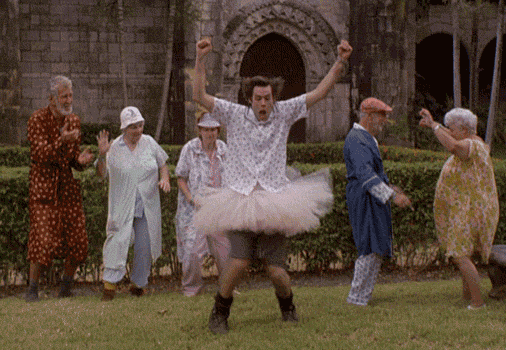Introduction
I’m interested in exploring how the process of learning
to speak is analogous to the process of learning to play music and how that is
shown in the Suzuki Method’s mother tongue approach to teaching. In the mid 1900’s, Japanese violinist,
Shin’ichi Suzuki realized that if young children could so easily learn even the
most challenging of languages, then they also have the ability to become
talented musicians. He created a theory
of teaching instrumental music that was based off of the process of children learning
their native language.
This “mother-tongue approach” is two-fold, first, it is
strongly grounded in full immersion in music, and secondly, it is very
concerned with creating a community of musicians. This is taken undoubtedly from Vygotsky’s
theory of social learning.
I want to investigate how constructs of language such as
grammar and punctuation translate into the “language” of music and how they are
learned and taught. In both languages,
learning is almost exclusively oral, with words being spoken aloud and notes
being played by ear and not by reading them off a page, and both “languages”
social learning reigns supreme.
Supplemental
Information
Mostly,
Suzuki programs are based in the public school systems, or less frequently,
there are independent schools of music that offer this training. It is common for children to start learning
music very young, although this is not always necessary. This program was first designed for
violinists, but has since been expanded to many instruments, although Suzuki
has its heart in the string family.
Conceptual Framework
I’m interested in the analogous nature of music to
language and how that forms the basis for this movement in music education
style. This is the concept of literacy,
and how one can be “literate” in many different things, such as interacting in
certain social situations and learning how to use an internet search engine. Since music bears a certain similarity to
languages—communicative, structured, reading, writing, speaking/playing—it will
be interesting to explore this possibility though the lens of the Suzuki
method.
I’m interested in the social learning aspect of this
program, that is, the community of those who are literate in music that the
child slowly becomes a part of, like how a child slowly joins a culture of
those who speak a certain language. The
child-instructor relationship is very crucial to this and so is the
relationship between the students as they can also mentor each other. The concept that relates to this is Vygotsky’s
sociocultural learning theory.
Methodology
My research was a combination of remembering my childhood
and Googling the Suzuki method. Firstly
I got a brief overview of the method from the Suzuki Association’s website,
then I watched a ten minute documentary on YouTube. I remained on YouTube, watching videos of
five year olds playing the violin at their recitals and being taught in
lessons. Eventually, I got bored of that
and started looking up pictures on Google Images that best represented the
Suzuki method. I chose the internet as
my main source since it is so easily accessible in comparison to almost
anything else. There was no real need to
track people down and interview them, or to try and sit in on a class.
I also did a lot of thinking about my own experience in
my school’s Suzuki Strings program that I was a part of from the third grade
until I graduated. I remembered some
things I had forgotten and tried not to be too nostalgic about it.
Findings
During my research, I noticed that there seemed to be two
main things that the Suzuki method boiled down to, that is the community of
musicians that the child is brought up in and also the idea that music should
come as naturally as speaking.
The community of musicians, that is, those that are
literate in music, is analogous to the community that is literate in the
child’s native language. Made up of
peers and parents and teachers, they are a support system for the child’s
learning progress as the child learns the language, in this case, music. The parents provide literacy opportunities
first, in the home, before the child goes to school, they have to make sure the
student practices their instrument in a similarly natural way to the way that
they practice speaking and reading. It
ought to be as enjoyable and as praiseworthy as learning new words is.
It is fairly common for one of the students’ parents to
learn to play the same instrument as the child, in just the same way that
parents speak the same language as their child.
The child becomes more invested in the learning process and more
enthusiastic if the parent-child relationship is played upon. The young student will have more to gain by
becoming literate like their parent(s) because the parents are “stimulating the
child’s desire to imitate” them (Piano Key, Suzuki
Piano Method). This also fosters the
parent-child bond, and creates a very safe and supported space for the child to
explore their new literacy.
An important part
of the literate community is the celebration of the child’s
accomplishments. Just as they are
rewarded and praised for saying their first words and eventually learning to
speak properly, so too are they praised and celebrated for becoming literate in
their instrument. It is common practice
in the Suzuki method to have recitals that mark certain achievements in the
students’ progression. These are usually
the completion of a book, which is a collection of increasingly difficult
pieces of music that the student learns.
The most popular of these recitals is always the child’s first one,
which can range from all the students in the entire grade, to a single student.
In these concerts, or recitals, the student is always accompanied
by their instructor, either on piano, or on the instrument the student
plays. This practice is to create a
supportive environment for the child so that the recitals do not have the
stress associated with a final exam type of situation because that is not the purpose of such events.
They are intended to be enjoyable celebrations of learning and music and
so the student must not be made to feel pressured.
In the learning of one’s native language, this recital is
probably the equivalent of a child being able to read his bedtime story aloud
alongside the parent.
Much of the Suzuki method is seemingly inspired by, or at
the least, similar to the theories of the psychologist Lev Vygotsky. Although Suzuki’s quest was to create
generations of people that were, ultimately, better people, with “noble hearts”, in practice, his teachings were
very grounded in the socio-cultural theories of the Soviet psychologist. If we take away the moral philosophies,
Suzuki’s work amounts to a new and effective, scientifically grounded way to
teach music.
Vygotsky’s concept of
the Zone of Proximal Development, ZPD, refers to the things that a child is
learning to do. In our case, it is to
play music. At the low levels of the ZPD
are the things that the child do on his own and at the higher levels are the child’s
potential abilities that may be
achieved with the help of a skilled teacher.
Since the students are involved in small lesson groups, these teachers
may also be their peers, perhaps an older student, or one who is naturally talented
at a certain skill. For example, a
student who has better vibrato than
another can share their insight with a struggling peer (photo from
suzukiassociation.org). More commonly,
in the upper level orchestral groups, the section leader will suggest bowings
and fingerings for the rest of the students in their section. Granted, they will probably require the
teacher’s approval, but it is the section leaders that take the initiative if
something doesn’t feel right, or can be made easier.
It is also very
important for the student to be constantly exposed to the sounds of music, just
as they are constantly exposed to the sounds of their native language. For student in Suzuki programs, this is
mainly achieved by listening to recordings of the pieces that are in the books,
although it is certainly not limited to that.
The recordings are performed by professionals and serve as guides for
what the students ought to sound like.
This isn’t to say that the students must imitate the player on the
recordings, but rather that it is a good example of good tone and
precision. Recordings exist in the
language-learning world as well; tapes of native speakers saying things like “Where
is the bathroom?” or, “Hello, my name is” so that students can hear all the inflections
and accents that would be incredibly hard to pick up on from working with text
alone. Listening to music is good for
musicians in the same way that reading books is good for writers; they get more
exposure to the craft, can be inspired, or can notice something they couldn’t
have before. Live music also falls into
this category since it has all the benefits of listening to the recordings, but
with the added benefit of being able to learn about the performance aspects of
music. Students are encouraged to attend
as many music performances as they can, especially if these performers are
their peers, which further helps to create the community.
Reflection
If I could have done this project
differently, I may have picked a slightly different topic, since researching
the learning of music-as-language was rather challenging. I was probably looking in some of the wrong
places. It would have been interesting
to find a connection with Ong’s “Writing is a Technology that Restructures
Thought” and investigate how music affects the thought processes of humans, if
it even does at all. I suspect that it
would be rather similar to the oral culture when the child is learning to play
by ear, and then perhaps there may be a change in their thoughts as they learn
to read music, just as when people gain the written word.
My understanding of the term literacy has changed over the course of
this project because I had the unique challenge of examining musical literacy
through the lens of language literacy.
The two line up surprisingly well, but sometimes it is a challenge to
think of how it is possible to immerse a child in music as fully as they are immersed
in their native languages. If I had more
time, I’d want to study how adults learn music and how it differs and is
similar to the way that young children learn music. The adults, of course, will probably have a
harder time than the children, since adults lack the extreme neuroplasticity of
children. Perhaps there are people who
retain this quickness of the brain, are they the ones we call geniuses?

 these things, that attack you if you go out into the wilderness and run into them.
these things, that attack you if you go out into the wilderness and run into them.